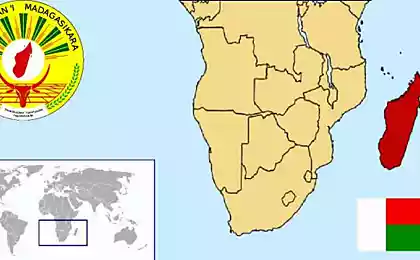476
Madagascar — the mystery of biodiversity

Although Madagascar occupies less than 0.5 % of the continental surface of the Earth, this island is home to a huge number of species of animals, and currently researchers are exploring the mystery of this unique biodiversity.
According to a new study at Duke University (USA), on the African island is inhabited by about 700 reptiles and amphibians. However, no single model could not explain the reason for such diversity among species.
After analyzing the geographic distribution of Madagascar's lizards, snakes, frogs and tortoises, an international team of researchers found that each group reacted differently to climate change on the island for a long time, and therefore these changes had a different effect on different types.
"This means that a single reduction of the number of types will not, some will perceive these changes better, others worse," says Jason brown (Jason Brown), co-author of the study in an official statement.
So, how exactly did such a large number of precious types? Madagascar is home to bright green geckos, the length of which can reach up to 30 cm for small tree frogs, the color of which can vary from blue and orange to yellow and green, and for half of all living on our planet chameleons. According to the results of earlier studies it was assumed that the steep slopes on the island can help to explain such a number of animals, about 90% of which cannot be found elsewhere.
In the new study, clues to for the first time in a single model integrated a variety of factors. Brown, along with a biologist from Duke University Anne Yoder (Anne Yoder) and other colleagues developed a model that comprises the current distribution of 325 species of amphibians and 420 species of reptiles that live in Madagascar at the present time, taking into account historical and modern topographic calculations, forecasts of rain and other phenomena on the island. They took into account the number of species proportion of unique species and level of similarity of types.
"It is not surprising that we found different groups of species, which vary due to various reasons," says Yoder.

For example, a change in altitude (mountains or water level in rivers) that best predicts which parts of the island inhabits a greater number of unique species of tree frogs and Vice versa: in those places where the climate is more stable, where we find more unique species of chameleons of the genus brookesia.
"What determines the distribution of, say, a certain group of frogs is absolutely not equal to what determines the distribution of a particular group of snakes, explains brown. – There is no uniform model".
Understanding how the distribution of species responds to climate change in the past can help scientists to predict which groups are most vulnerable to global warming, deforestation in the future, and what factors pose the greatest threat.
Coconut will help to store hydrogen efficiently and safely
In Tatarstan will be launched one of the largest industry plants






















